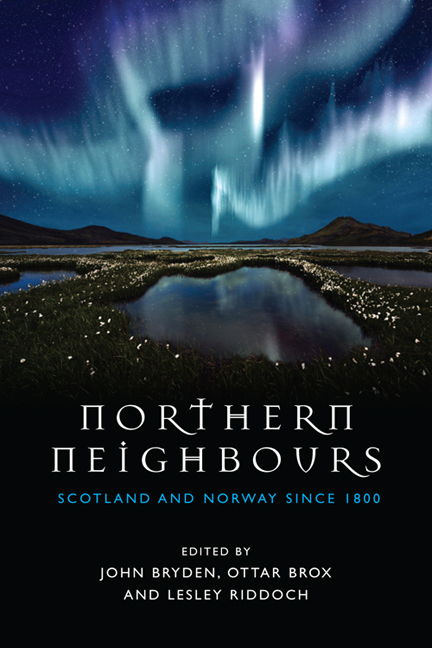Book contents
- Frontmatter
- Contents
- Acknowledgements
- Foreword
- 1 Introduction
- 2 Towards a Theory of Divergent Development
- 3 Cousins Divided? Development in and of Political Institutions in Scotland and Norway since 1814
- 4 Agrarian Change in Scotland and Norway: Agricultural Production, Structures, Politics and Policies since 1800
- 5 The Evolution of Local Government and Governance in Scotland and Norway
- 6 The Development of Industry and North Sea Oil in Scotland and Norway
- 7 Reflections on the Making of Norway
- 8 Money and Banking in Scotland and Norway
- 9 Religion in Scotland and Norway
- 10 The Nordic Welfare Model in Norway and Scotland
- 11 Access, Nature, Culture and the Great Outdoors – Norway and Scotland
- 12 Education in Norway and Scotland: Developing and Re-forming the Systems
- 13 Norway and the United Kingdom/Scotland after the Second World War
- 14 Conclusions
- The Contributors
- Bibliography
- Index
3 - Cousins Divided? Development in and of Political Institutions in Scotland and Norway since 1814
Published online by Cambridge University Press: 05 August 2016
- Frontmatter
- Contents
- Acknowledgements
- Foreword
- 1 Introduction
- 2 Towards a Theory of Divergent Development
- 3 Cousins Divided? Development in and of Political Institutions in Scotland and Norway since 1814
- 4 Agrarian Change in Scotland and Norway: Agricultural Production, Structures, Politics and Policies since 1800
- 5 The Evolution of Local Government and Governance in Scotland and Norway
- 6 The Development of Industry and North Sea Oil in Scotland and Norway
- 7 Reflections on the Making of Norway
- 8 Money and Banking in Scotland and Norway
- 9 Religion in Scotland and Norway
- 10 The Nordic Welfare Model in Norway and Scotland
- 11 Access, Nature, Culture and the Great Outdoors – Norway and Scotland
- 12 Education in Norway and Scotland: Developing and Re-forming the Systems
- 13 Norway and the United Kingdom/Scotland after the Second World War
- 14 Conclusions
- The Contributors
- Bibliography
- Index
Summary
ABSTRACT
Scotland and Norway started the nineteenth century as political cousins with seemingly similar structural features with regard to the political unions in which they took part. Yet from that point onwards their national development diverged. Norway turned out to become a rapidly developing, consensus-oriented and egalitarian nation-state, where democratisation ran parallel with the pursuit of national autonomy. Its Scottish cousin, meanwhile, remained embedded in the Union of Great Britain. It was characterised by adversarial politics and sharp social inequalities and saw its national aspirations run awry. How and why two countries with a shared point of departure evolved into entities that differ so profoundly today provides the puzzle for this chapter. We assess the perceived similarity between Scotland and Norway at the start of the period, analyse the differences in the social and political models today and trace the factors that may account for how the gap appeared. Finally, we consider the implications for an independent Scotland with this historical backdrop.
INTRODUCTION
The longue durée of Scottish and Norwegian history gives ample reason to place the two under the same light of scrutiny. Both nations were unified as seaward empire-nations in the Middle Ages, only to move towards peripheral status under a stronger neighbouring centre during the phase of accelerated nationbuilding from the sixteenth century onwards. They both turned Protestant in the Reformation and concentrated heavy responsibility for cultural development and education in their State Churches. Both Norwegians and Scots, furthermore, maintained − even during the peak periods of political integration under the dominant external centre − distinctive legal traditions and institutions as well as urban corporations with some independence in their external trade relations. Finally, in cultural terms, both countries harboured progressive rural movements with the potential to forge links with an emerging industrial working class.
In the run-up to the referendum on Scottish independence in 2014 an argument has been made − especially by proponents for independence − that Scotland should regenerate its relations across the North Sea. However, as we will argue in this chapter, in social and political terms Scotland and Norway have diverged widely from a seemingly similar structural position, thus complicating any claim to familiarity today.
- Type
- Chapter
- Information
- Northern NeighboursScotland and Norway since 1800, pp. 42 - 62Publisher: Edinburgh University PressPrint publication year: 2015



